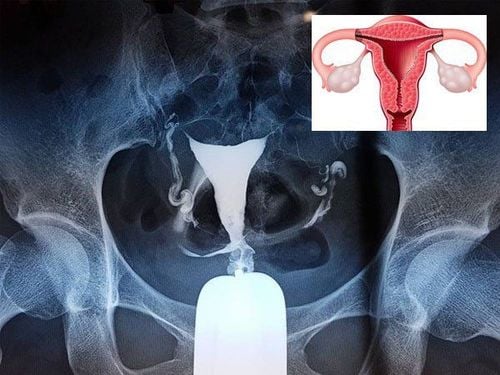This is an automatically translated article.
The article is professionally consulted with Master, Doctor Le Nhat Nguyen - Doctor of Obstetrics and Gynecology - Department of Obstetrics and Gynecology - Vinmec Danang International General Hospital.Polycystic ovary syndrome is an endocrine disorder and is one of the main causes of infertility in women due to a lack of ovulation or disordered ovulation.
The signs of polycystic ovary are often not obvious, thus making it easy for patients to ignore. The following article outlines some symptoms that can help women recognize polycystic ovarian disease.
1. Menstrual disorders
Manifestations of menstrual disorders are irregular periods, irregular periods, or amenorrhea when women have polycystic ovaries. To diagnose polycystic ovary, menstrual irregularity is considered one of the main criteria. About 90% of women with amenorrhea have polycystic ovaries on ultrasound.For women after going through puberty, usually the menstrual cycle will go into a steady state. However, when the menstrual cycle often changes irregularly, shorter than 25 days or longer than 35 days, especially when the menstrual cycle is long and bleeding less, it is likely that polycystic ovary disease is present.
Because women with polycystic ovary syndrome have abnormally high levels of male hormones, it leads to menstrual disorders, thereby causing abnormalities in the ovulatory cycle, leading to difficulty conceiving or infertility.
2. Lots of hair, acne
Accumulating many male hormones in the body will stimulate hair growth, causing hirsutism in some locations such as mustache, chest, abdomen, hands, feet,...Besides, hormonal changes in The body will lead to some changes in the skin. One of those changes could be that the skin becomes more oily, prone to breakouts.

3. Overweight, obese
Women with polycystic ovary syndrome will have an excess of the hormone insulin compared to the body's needs, so digestion and food metabolism problems are disrupted, leading to a higher risk of obesity despite having The amount of food ingested is not much.Statistics show that the rate of obese women with polycystic ovary syndrome is 30-50%. If based on BMI or waist-to-hip ratio to determine obesity, overweight and obese women have BMI >25. Several studies have shown that obesity is also one of the factors that increase the risk of polycystic ovary disease. Therefore, it can be said that weight plays a very important role in promoting the clinical manifestations of polycystic ovary symptoms. Therefore, to improve the disease, it is necessary to control weight.
4. Mood swings

The worry of many people is, do you ovulate with polycystic ovary? In women with PCOS, there is often an abnormal increase in testosterone and LH levels, which disrupts the development of ovarian follicles. The failure of the follicle to develop leads to the appearance of small cysts, the egg cannot develop to maturity and there is no ovulation, which can lead to serious consequences such as infertility.
Currently, the exact cause of polycystic ovary syndrome is still unknown. When noticing the above-mentioned abnormal polycystic ovary signs, women should actively consult a doctor for timely diagnosis and treatment.
Please dial HOTLINE for more information or register for an appointment HERE. Download MyVinmec app to make appointments faster and to manage your bookings easily.














